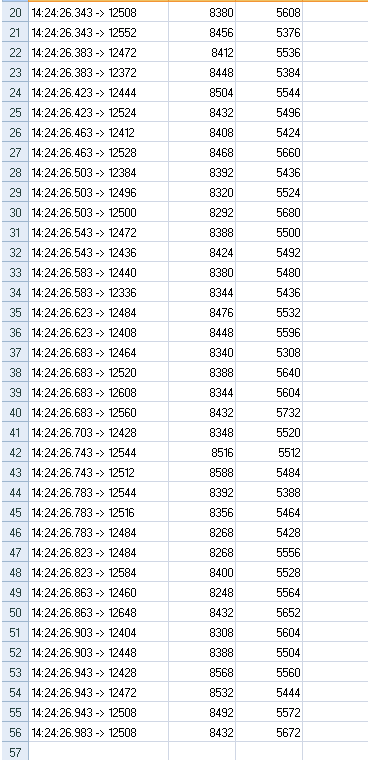mpu6050 has sampling frequency of 1kHz (mentioned in datasheet). But when i interface it with arduino uno via I2C communication (400Khz bus speed), i only get 50 raw data (each of x,y,z). There is no delay in the program. why is this happening. Why am I not getting 1000 or at least 800 samples. What is the concept I am missing here. Please explain in detail. I have also attached the code and output for 1 second.
#include "I2Cdev.h"
#include "MPU6050.h"
#include "Wire.h"
//#include <SoftwareSerial.h>
//SoftwareSerial BTserial(10,11);
MPU6050 accelgyro;
char ch;
int incomingbyte = 0;
int16_t ax, ay, az;
int16_t gx, gy, gz;
void setup() {
Wire.begin();
Serial.begin(115200);
accelgyro.initialize();
accelgyro.setXAccelOffset(542);
accelgyro.setYAccelOffset(-835);
accelgyro.setZAccelOffset(1651);
accelgyro.setXGyroOffset(6);
accelgyro.setYGyroOffset(-18);
accelgyro.setZGyroOffset(23);
}
void loop()
{
accelgyro.getAcceleration(&ax, &ay, &az);
accelgyro.getRotation(&gx, &gy, &gz);
Serial.print(ax); Serial.print("\t");
Serial.print(ay); Serial.print("\t");
Serial.println(az);
}

